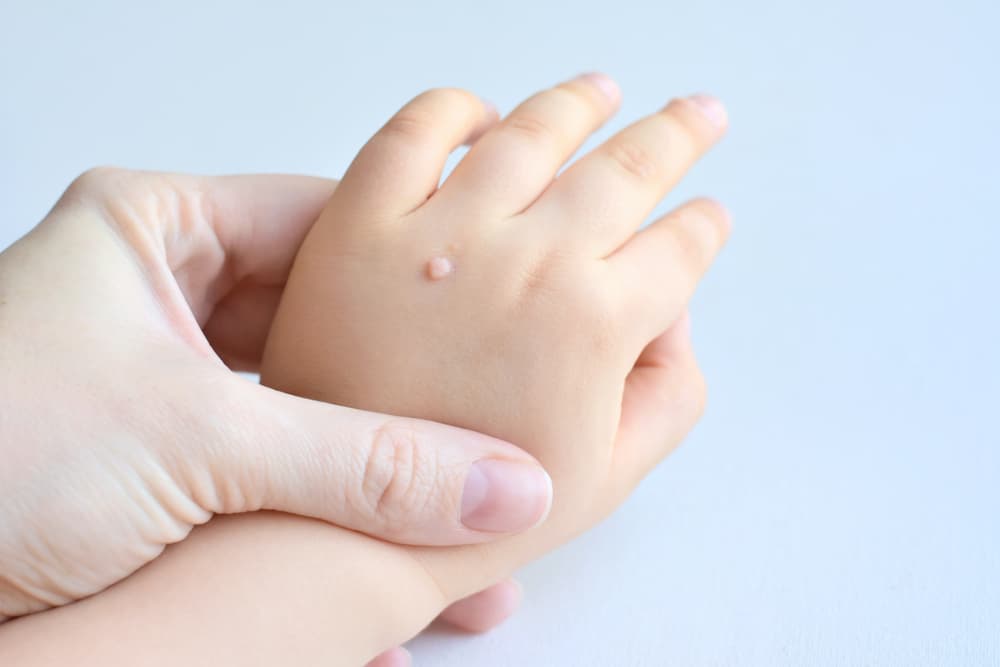Warts, also known as verruca vulgaris, are a common skin condition among children. Warts are raised or flat skin colored, white, or greyish bumps that erupt on the skin. They typically have a rough texture and lack the natural lines of the skin. They are benign in nature, meaning they are non-cancerous. Warts are typically asymptomatic, but on occasion may cause pain. Warts are also highly contagious and can easily be spread to different areas of the body as well as from person to person. Warts can appear anywhere on the body, but most commonly affect the hands and the feet of children.
WHAT CAUSES WARTS?
Warts are caused by the human papilloma virus (HPV). This virus has many different strains and can be picked up virtually anywhere in a child’s environment. Warts are most commonly contracted from other individuals that are infected with HPV through skin to skin contact such as shaking hands. Children are typically more susceptible to warts than adults as their immune systems haven’t fully developed yet.
TREATING WARTS
There are a multitude of treatment options to treat warts that include cryotherapy, Cantharidin, salicylic acid, Cimetidine, Imiquimod, laser treatments, electrodessication and curettage, and excision. Sometimes, warts can clear on their own without any treatment. Due to the persistent nature of warts however, it is best to get them treated for a quicker clearance of the lesions.



